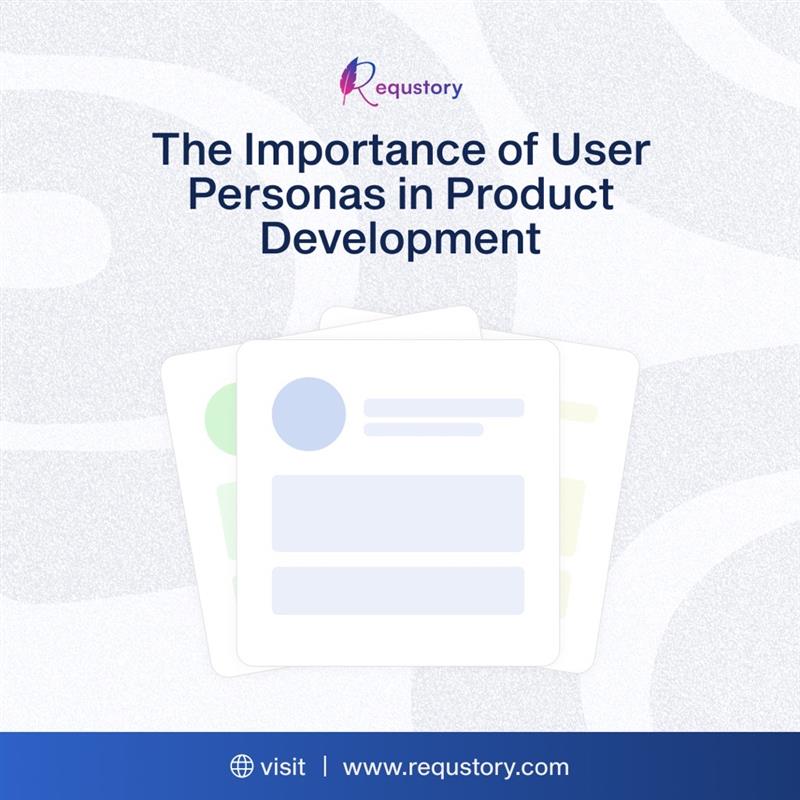Introduction: What Are User Personas and Why Do They Matter?
In today’s competitive business world, designing products that resonate with users is crucial for success. One powerful tool that helps achieve this is user personas. User personas are detailed, semi-fictional representations of your ideal customers, built based on data, research, and behavioral patterns. These personas are more than just vague customer profiles—they are deeply rooted in insights that guide design, marketing, and customer experience strategies.
Understanding your user personas can provide a roadmap for making informed decisions throughout product development. In this article, we’ll explore why user personas are so important and how they can transform the way products are created, marketed, and refined.
What Are User Personas?
User personas are a tool used in product development to define your ideal customers in a detailed, human way. These personas typically include information such as:
Demographics: Age, gender, location, occupation, and income.
Psychographics: Interests, values, and lifestyles.
Goals and Challenges: The problems they’re trying to solve and what success looks like to them.
Behaviors: How they interact with products, services, and technologies.
User personas offer a clear understanding of who your audience is, helping you align your product features, functionality, and marketing efforts with their needs and preferences. The better your understanding of your personas, the better your product will serve their needs.
The Role of User Personas in Product Development
User personas play a pivotal role in every stage of product development. Let’s break down their importance at each stage:
1. Product Design
User personas help design teams create products that meet the specific needs and preferences of their target audience. With clear personas in mind, designers can prioritize features, design user interfaces (UI), and ensure an intuitive user experience (UX). A deep understanding of your personas ensures that your product’s features, aesthetics, and usability resonate with the people who will be using it.
2. User Experience (UX) Optimization
UX optimization is about designing products that are easy and enjoyable to use. With user personas, you can identify pain points that your target audience may face during product interaction. For example, a persona that includes a tech-savvy audience might focus on advanced functionality, while a persona with less technical experience may prefer simpler, more intuitive navigation. Understanding these preferences can help fine-tune the product to deliver a seamless user experience.
3. Marketing Strategy
User personas are also essential for crafting targeted marketing campaigns. By understanding the motivations, needs, and behaviors of your ideal customers, you can create personalized content and promotional messages. You’ll be able to segment your audience and deliver content that appeals to each persona. Whether through social media, email marketing, or other digital channels, personas provide the insights needed to speak directly to your potential customers in a way that resonates with them.
4. Customer Support and Engagement
A well-developed user persona can also guide customer support strategies. Understanding the persona’s challenges, preferred communication channels, and potential roadblocks enables your support team to tailor their responses. Whether providing troubleshooting advice or offering product recommendations, personas ensure that support feels personalized and empathetic, building a stronger relationship between the customer and the brand.
How to Create Effective User Personas
Creating effective user personas requires gathering data and analyzing patterns to build a comprehensive understanding of your target audience. Here’s a step-by-step guide to creating meaningful personas:
Conduct User Research
Start by gathering data from a variety of sources, including customer interviews, surveys, web analytics, and social media. Look for trends in behavior, pain points, and goals. This data will form the foundation of your personas.
Identify Key Demographics
Use your research to identify key demographic information such as age, gender, location, income, and occupation. This helps create a clear profile of who your users are.
Analyze Needs and Goals
Understand what your users hope to achieve with your product. What problems are they trying to solve, and what motivates them to make a purchase? This insight is critical for designing a product that aligns with their objectives.
Develop Behavioral Insights
Look at how your users behave. What are their habits and preferences when it comes to using products or services like yours? What features do they tend to use most often, and where do they experience friction? These insights guide product design and user experience strategies.
Humanize the Persona
Give your persona a name, photo, and backstory to make it relatable. A persona like “Tech-Savvy Tina” or “Busy Professional John” can help the team visualize who they are designing for. The more human your persona feels, the better your team can empathize with them.
Review and Update Regularly
Personas aren’t static—they should evolve as new data and insights come in. Be sure to regularly review your personas based on feedback, product usage patterns, and market shifts to ensure they stay relevant.
The Benefits of User Personas in Product Development
Using user personas offers numerous benefits to product teams and businesses. Some of the most significant advantages include:
Informed Decision-Making: Personas guide product features, UI/UX design, and marketing decisions, making sure all choices are based on real customer data and insights.
Better User-Centered Design: With personas, the product is always designed with the user in mind, ensuring that every aspect of the product is aligned with customer needs and expectations.
Improved Communication and Alignment: Personas help bridge communication between cross-functional teams (design, development, marketing, etc.) by providing a shared understanding of who the target audience is and what their goals are.
Higher Customer Satisfaction: When products are built with clear personas in mind, they are more likely to meet the needs and expectations of users, leading to improved satisfaction, loyalty, and retention.
Common Mistakes to Avoid with User Personas
While user personas are a valuable tool, there are a few common pitfalls to avoid:
Over-Simplification: Avoid reducing personas to overly simplistic descriptions that don’t provide meaningful insights. A good persona should be based on solid research and reflect complex, real-world behaviors and motivations.
Ignoring Data: Building personas based on assumptions rather than data can result in inaccurate representations of your audience. Always back up your personas with research.
Not Involving Key Stakeholders: Developing personas in isolation can lead to disconnects between departments. Involve cross-functional teams in the persona creation process to ensure that everyone’s perspectives are considered.
Overloading with Information: While details are important, too much information can overwhelm your team. Keep personas focused on the most critical data points and insights to guide decision-making.
How Requstory Helps in Product Development with User Personas
Requstory is a powerful platform that can streamline the process of creating, managing, and utilizing user personas in product development. With its AI-powered user story generation, Requstory helps you transform your personas into structured, actionable user stories that guide product design and development.
Requstory’s intelligent process mapping tool allows you to visualize workflows effortlessly, ensuring that your product development process is efficient and collaborative. By integrating user personas into your workflows with Requstory, you can align your team’s efforts around a shared understanding of your users’ needs.
Whether you’re working on a startup or scaling for an enterprise, Requstory scales with your business, helping you create, map, and manage user personas effectively.
Conclusion: Why User Personas Are Essential for Product Success
Incorporating user personas into your product development process is crucial for creating products that truly meet your users’ needs and preferences. By investing time in building detailed, data-driven personas, you can ensure that your product aligns with your target audience and stands out in a crowded market.
If you’re looking for a tool to streamline the creation and management of user stories and process maps, consider Requstory. Requstory’s AI-powered features and collaborative platform make it easier to integrate user personas into your development process, saving time and ensuring that every decision is user-centered. Start using Requstory today and take your product development to the next level!
Frequently Asked Questions
What is a user persona?
A user persona is a detailed, semi-fictional representation of your ideal customer, created based on research and data. It includes demographics, behaviors, goals, challenges, and motivations that guide product design and marketing strategies.
How do user personas benefit product development?
User personas provide a deep understanding of who your users are and what they need. They help inform design choices, streamline the development process, enhance UX, and create targeted marketing strategies that resonate with your audience.
How often should user personas be updated?
User personas should be updated regularly based on new customer insights, feedback, and market shifts. Review your personas periodically to ensure they remain aligned with current user behavior and needs.

